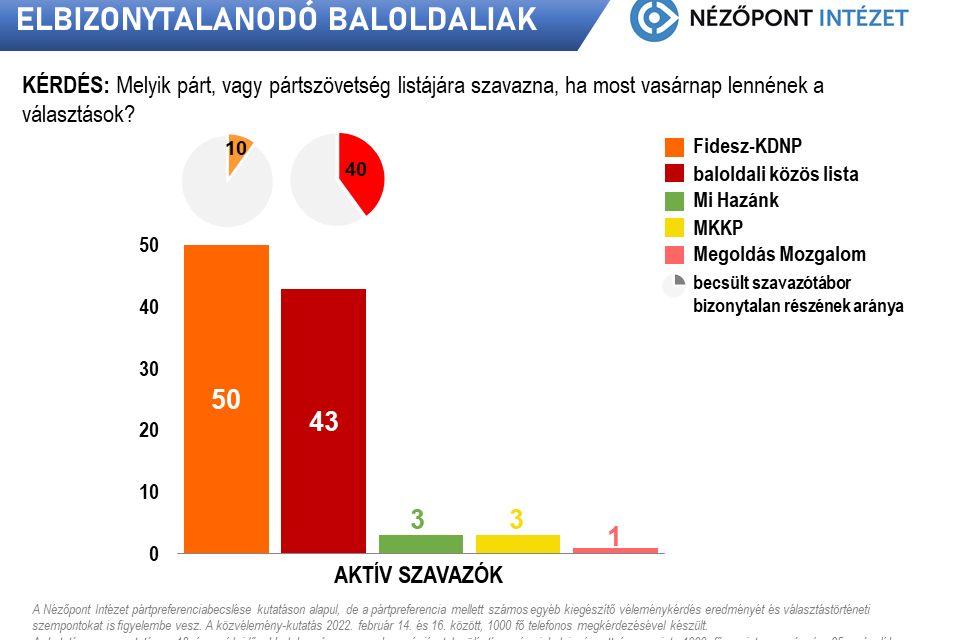Six weeks before the election, the campaign period in Hungary seems like a standing war. the Nézőpont Institute's election list results eerily match the data from the beginning of the year.
If elections had been held "this Sunday", the ruling party would have received every second party-list vote (50 percent), while the joint list of the left could have counted on 43 percent of the votes. The two small parties besieging the threshold, Mi Hazánk and the Kétfarkú Kutya Párt, still stand at 3% each, while the remaining one percent of active voters, previously classified as other, would no longer vote for "some other" party, but it seems that György Gattyán's party will be increased to over one percent - according to the latest opinion poll of the Nézőpont Institute.
However, an important change can be seen beneath the surface. While in January, less than a quarter of the estimated left-wing camp (24 percent) could be considered undecided, by mid-February their proportion had increased to 40 percent. All this means that four out of ten citizens who, in principle, voted for the left-wing list are not sure of their job. You can wink at other parties or decide to stay home on election day. The reason for the worsening results is probably to be found in the controversial behavior of the prime minister candidate, instead of explaining, the growing proportion of left-wing voters chooses hidden support instead of open support.
In January, we indicated that the Fidesz voting base is committed and not only sympathizes with the ruling party, but is also satisfied with the government and especially the prime minister. Then and now, Nezőpont's estimate of the "most likely list result" sees a chance for a better result for the ruling party than in 2018. At the same time, the participation of 10 percent of Fidesz voters cannot be taken for granted, the ruling party can achieve the expected good results only if its mobilization is successful, and it addresses its fringe voters at the right time and with efficiency.
Although the two minor parties currently do not reach the five percent threshold according to the Nézőpont estimate, they both still have reserves. In our research, we asked who is likely to vote for these parties, and we excluded those who definitely voted for one of the other parties. Based on these, it can be said that Mi Hazánk is currently the small party with the best chance of entry, whose potential support reaches 6 percent. The voters of the more than 3 percent who are definitely present may come mainly from the camp of the left-wing undecideds, after their doubts regarding their previous party sympathies are increasing. In 2018, one half of Mi Hazánk's existing three percent camp were still Fidesz voters, and the other half were Jobbik voters.
The potential support of the Two-Tailed Dog Party is 4 percent, and its supporters are exclusively government critics. The joke party is therefore a serious threat to the left-wing joint list. The question is whether the value below the threshold will unsettle or excite the existing or additional voting base.
Source: Viewpoint , Magyar Hírlap
Photo: Viewpoint Institute













